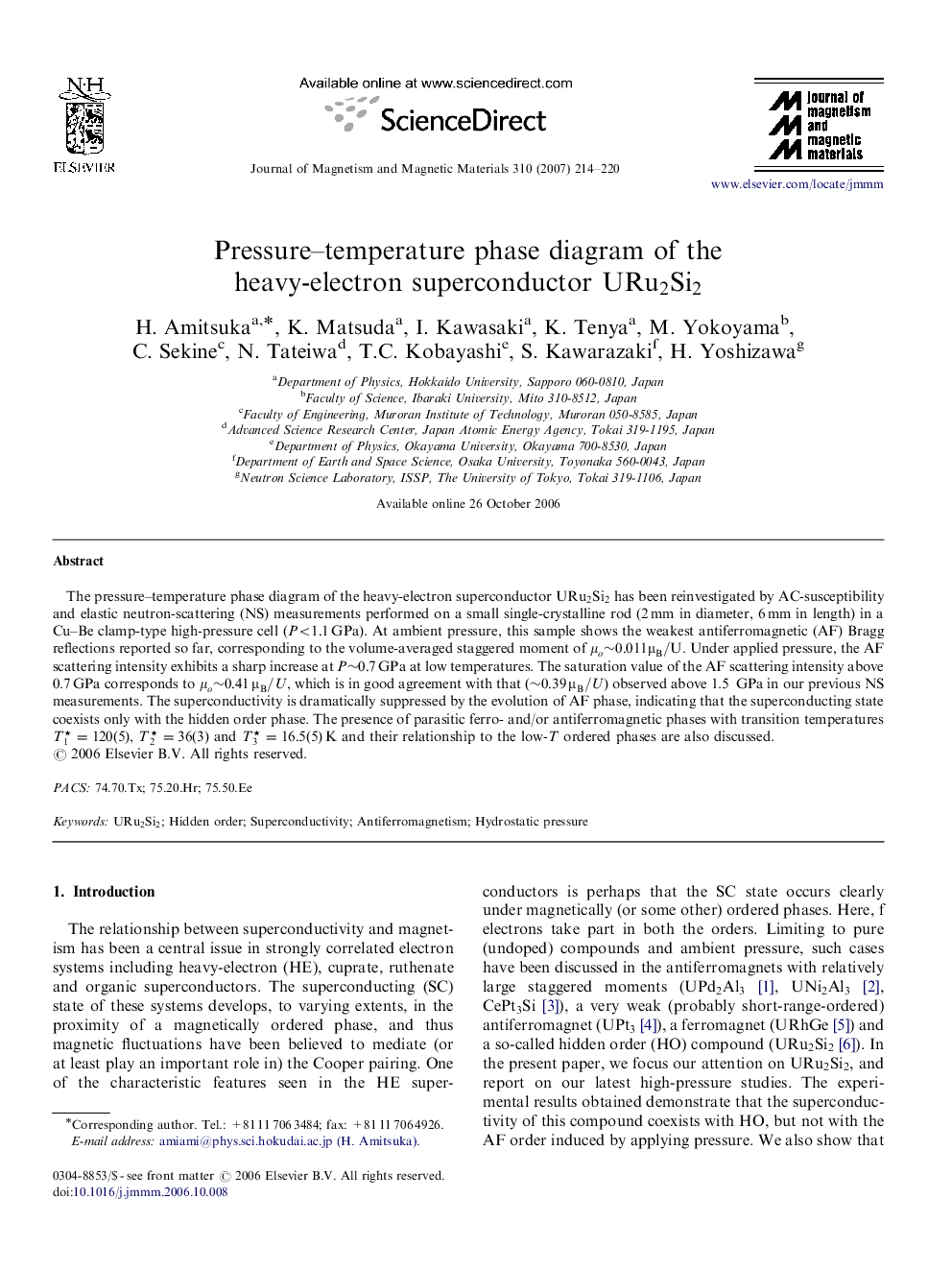| Article ID | Journal | Published Year | Pages | File Type |
|---|---|---|---|---|
| 1804527 | Journal of Magnetism and Magnetic Materials | 2007 | 7 Pages |
The pressure–temperature phase diagram of the heavy-electron superconductor URu2Si2URu2Si2 has been reinvestigated by AC-susceptibility and elastic neutron-scattering (NS) measurements performed on a small single-crystalline rod (2mm in diameter, 6mm in length) in a Cu–Be clamp-type high-pressure cell (P<1.1GPa). At ambient pressure, this sample shows the weakest antiferromagnetic (AF) Bragg reflections reported so far, corresponding to the volume-averaged staggered moment of μo∼0.011μB/Uμo∼0.011μB/U. Under applied pressure, the AF scattering intensity exhibits a sharp increase at P∼0.7GPa at low temperatures. The saturation value of the AF scattering intensity above 0.7 GPa corresponds to μo∼0.41μB/U, which is in good agreement with that (∼0.39μB/U) observed above 1.5 GPa in our previous NS measurements. The superconductivity is dramatically suppressed by the evolution of AF phase, indicating that the superconducting state coexists only with the hidden order phase. The presence of parasitic ferro- and/or antiferromagnetic phases with transition temperatures T1⋆=120(5), T2⋆=36(3) and T3⋆=16.5(5)K and their relationship to the low-TT ordered phases are also discussed.
